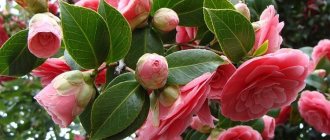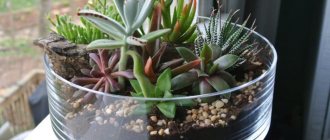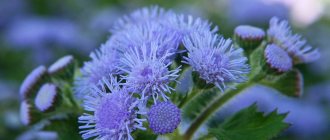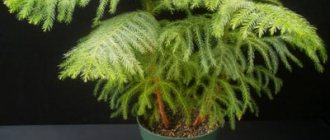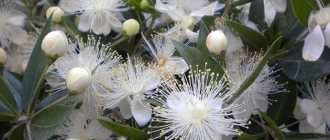We bring to your attention: aglaonema - varieties, names, photos. Bright, elegant and at the same time relatively unpretentious and easy to care for, aglaonema has deservedly soared to the top of the charts of indoor plant lovers.
The abundance of varieties and variety of leaf colors - from white to bright crimson and almost black, with a border, speckled, striped, tricolor - as well as the valuable ability to improve the air quality in the apartment, make aglaonema a magnificent green friend for every taste and all occasions life.
Aglaonema was initially brought to Russia from Dutch nurseries, where it came from Asia. Initially, it was possible to buy aglaonema mainly only with green leaves. In the last few years, Aglaonemas have been coming to us directly from nurseries in Southeast Asia, where they are extremely popular and amaze with the brightness of their colors.
The main Asian producing countries of variegated aglaonema varieties are Thailand and Indonesia. And the green variety, popular in China, which is known as Chineese evergreens, is often found in our country under the name Aglaonema Maria.
We show the variety of types and varieties of aglaonema with names and photos. The selection includes many Asian varieties from Thailand and Indonesia, plus classic old varieties.
Botanical description and characteristics
Aglaonema is a genus of evergreen herbs or shrubs from the Araceae family, which includes about 50 species. It lives in the humid tropics of Southeast Asia, the Philippines, and the islands of the Indian and Pacific oceans. Grows as undergrowth along the banks of water bodies.
Many types of aglaonema are cultivated as indoor flowers, and in southern countries they are used for street landscaping.
What does the plant look like?
The rhizome of Aglaonema is compact, with a large number of thick, white-cream lace-like shoots. Depending on the species, the crop forms stems:
- vertical or creeping, rooting in nodes;
- juicy;
- with round section;
- quite thick;
- with short smooth internodes;
- Most species used in culture branch reluctantly, but some produce lateral shoots from the base of the central shoot.
In indoor floriculture, aglaonema is valued for its leaves:
- usually they have the shape of an elongated ellipse, but can be broadly oval, heart-shaped, linear;
- length – 10-15 cm, sometimes more;
- with a slightly pointed tip;
- the edge is smooth;
- the central vein is clearly defined, depressed on the front part, protruding from the back;
- petioles long, vaginal;
- coloring - from plain green to painted with spots, borders, stripes or patterns of different colors and shades.
The ornamentation on the leaves of Aglaonema is usually silver, white, gray or light green. But there may be other shades of green, red, pink, purple.
The height of aglaonema usually does not exceed 70 cm. This compares favorably with many decorative foliage plants with large plates.
How does aglaonema bloom?
At home, aglaonema rarely blooms. At the base of the bush, a not too long peduncle appears with a white cob and a greenish spoon-shaped or oval blanket surrounding it. It looks cute, but nothing more.
The female zone of the cob is short, located at the base. The male produces pollen along its entire length.
If the flowering of aglaonema is not of particular decorative value, then the berries are truly beautiful:
- fleshy;
- oval;
- ripe - bright red, yellow or white;
- each contains one large ellipsoidal seed;
- ripen 6-8 months after the plant stops blooming.
You can propagate Aglaonema species with your own seeds.
Is Aglaonema poisonous?
The culture is toxic, like all representatives of the Araceae family, for example, anthurium, spathiphyllum, monstera. But to get poisoned, you need to eat quite a lot of leaves. A person would rather vomit than die.
But you need to work with the plant carefully, wearing gloves. Irritation of the mucous membranes is caused by juice that gets on your hands:
- when cutting;
- if the transplantation of aglaonema is carried out carelessly;
- during the removal of old vegetative organs;
- when a flower reproduces by dividing the bush.
Aglaonema is poisonous to pets. What’s even worse is that beautiful berries arouse children’s interest. So you need to think carefully about whether to leave or immediately break off the flowering cob.
But the plant brings benefits:
- humidifies and purifies the air;
- releases phytoncides;
- has a detrimental effect on streptococcal bacteria;
- reduces the content of toluene, benzene.
Where to buy, price
Aglaonema domestica is a popular product. Different varieties are sold in specialized flower shops. Flowers can also be ordered online. The Crete variety belongs to the category of rare and spectacular chameleon plants. Its cost is quite high. An adult healthy plant will cost 1500-2000 rubles, a shoot can be bought for 900-1000 rubles.
Caring for aglaonema at home
A plant for beginners, with simple agricultural technology, which easily fits into the interior of any apartment. But this does not mean that the flower can be left completely unattended or placed in spartan conditions. Culture cannot stand:
- drafts;
- unlike most indoor plants - tobacco smoke;
- various sprays and other means to give leaves more shine;
- when a pot with a plant is placed outside or on a balcony.
Lighting and temperature
The flower can stand on the northern window or in the back of the room, where little light reaches. Does not like direct sunlight; burns may appear on the leaves.
The most comfortable temperature is 18-25° C. The lower limit cannot be lowered even in winter.
When caring for aglaonema at home, you need to take into account that species or varieties with white or silver leaves require more light and heat.
Watering schedule
Proper watering is of great importance. From spring to early autumn, the soil should always be slightly moist, without stagnant water in the root area. At the end of the growing season, irrigation is reduced, but even short-term drying out of the soil is not allowed. Watering is needed evenly, regularly, but moderately.
Air humidity should be high. The leaves are often sprayed if the flower is located next to heating devices - even in winter.
To make your work easier and prevent leaves from rotting during the cold season due to water remaining on the vegetative organs, you can place a wet terry towel on the battery. You just have to remember to wet it.
In summer, the flower needs to be watered periodically from the shower. In cool weather, wipe the leaves with a damp, clean cloth.
Feeding
During the active growing season, aglaonema is fed every 2-3 weeks. It is necessary to use preparations for decorative deciduous crops. In autumn and winter, the flower is not fertilized.
After transplanting into ready-made, store-bought soil for aglaonema, the first fertilizing can be done no earlier than after 1.5-2 months. This is how long it takes for the nutrients added to the substrate by the manufacturer to be depleted.
Transfer
Every year they change to a larger pot for aglaonema only for the first few years. Mature plants should be replanted every 3-5 seasons. The operation is carried out in the second half of spring.
The soil for aglaonema needs loose, fertile soil. You can take a ready-made store-bought substrate, or transplant the plant into a mixture you prepare yourself:
- leaf humus - 2 parts;
- peat – 1;
- coarse sand or perlite – 1;
- pieces of charcoal.
The pot should be taken with the bottom holes, low, or the “extra” volume should be filled with drainage. Expanded clay or broken red brick at the bottom must be present - this not only protects the root from getting wet during overflow, but also improves air access.
It is recommended to transplant Aglaonema using the transshipment method:
- Remove the earthen lump from the pot.
- Place drainage and a thin layer of fresh substrate at the bottom of a slightly larger container.
- Place the aglaonema in the center.
- Fill the free space with new soil.
- Crimp around the edges.
- Water generously.
Pruning and rejuvenation
The young plant does not need to be formed - it produces a lush rosette of leaves located close to each other. But over time, the stem of aglaonema still stretches, although it grows slowly. Then the shoot is cut off, leaving a column 1-2 cm high. Over the course of the season, it will produce one or more lateral shoots, acquire new leaves, and regain its attractiveness. The remaining cuttings are used for propagation of aglaonema.
To make the plant more bushy, you don’t need to pinch the crown - there is a growing point that produces new leaves. And the internodes of the crop are already short.
Enough:
- keep the plant in a tight pot with a good drainage layer;
- provide comfortable conditions;
- water regularly;
- feed during the growth period;
- Spray the leaves frequently.
Forum, reviews
Growing exotic houseplants is intimidating for novice gardeners. Many of them prefer to first collect information on forums and then purchase a plant. Those who have experience willingly share their reviews:
Pegova Inna, 56 years old: “I was given an aglaonema plant for my anniversary. To be honest, at first I was skeptical about it. I thought that the leaves would quickly lose color and it would not live in a simple Moscow apartment. My beauty has grown and recently bloomed contrary to my expectations. I can’t say that I did anything special for her. It seems to me that the care was no different from usual.”
Ilyasova Marta, 64 years old: “I really like aglaonema. Caring for it is not difficult, although those who come to visit me for the first time think that I am a sorceress, since I have a flower with red leaves. There was a moment when it began to wither and wither, but I replanted it, and after a while the plant straightened out. For those who are afraid to buy, I advise it is better to take cuttings from friends who are ready to replant an overgrown bush. You can see in advance what kind of aglaonema it is. A photo or video of a flower will immediately let you know what variety is in front of you.”
Methods of propagation of aglaonema
There are many methods of breeding the crop. But the simplest thing, vegetative, is difficult due to slow growth and the absence of side shoots. So gardeners who do not want to deal with seeds can get several new plants only from an adult aglaonema.
Cuttings
The operation is best performed in April-May. In the southern regions, you cannot wait until the heat sets in - the shoots take root worse.
Reproduction of aglaonema by cuttings, step by step:
- In mid-spring, cut off an elongated shoot of an old plant, leaving a column of 1-2 cm.
- Separate, if any, side branches.
- Cut into pieces of 8-10 cm. The most valuable cuttings are the apical ones, they will quickly turn into beautiful young plants.
- Sprinkle all wounds with activated carbon powder.
- Dry in partial shade with free access to fresh air for 24 hours.
- Plant in calcined sand, deepening it by half or a little more (4-6 cm).
- If there are leaves on the cuttings, lift them up and carefully tie them with a soft cord.
- Keep at high humidity, temperature 20-25° C. The sand should not dry out even for a short time.
- Roots will appear in about a month. Plant aglaonemas in small pots with a light substrate.
Many sources advise making cuttings 4-5 cm long. Of course, you will get more new plants, but with the same probability, pieces of the stem will disappear. Typically, experienced gardeners do not take risks, and still try to root aglaonema by cutting cuttings of 8-10 cm.
Growing from seeds
This is not the easiest way to reproduce. Your seeds must ripen on the bush. They are freed from integumentary tissues, washed, and planted to a depth of 1 cm in a peat-sand mixture (1:1).
Keep at a temperature of 22-25° C and high humidity under glass or transparent film. Daily:
- ventilate;
- remove condensation;
- check the humidity, if necessary, spray it with a household spray bottle.
When the sprouts hatch, the seedlings are gradually accustomed to fresh air. After two true leaves appear, they are planted in individual cups with a light substrate.
When propagated by seed, full-fledged aglaonemas can be obtained in 3-4 years.
Dividing the bush
When transplanting, the old plant is inspected. If a root shoot has appeared with at least 3-4 good leaves, carefully divide the bush into parts using a sharp knife.
Planted in smaller pots. For a week they are removed to a place that is less well lit than before. The leaves are often sprayed.
It is useful to water the aglaonema divisions after planting not with ordinary water, but with a solution of root or heteroauxin.
Benefit for health
In fact, modern furniture, synthetic building materials, and even your own carpet may contain more chemicals than you might imagine. These chemicals can account for up to 90 percent of indoor air pollution.
Aglaonema round, like other species, purifies polluted indoor air.
Living in an energy-efficient modern building can have unforeseen side effects. One of these side effects is low air flow. Lack of air flow leads to the accumulation of indoor pollutants and causes health problems such as asthma or fatigue syndrome.
Possible problems during cultivation
Pests common to indoor plants may appear on aglaonema:
- thrips;
- spider mites;
- scale insects;
- scale insects;
- rarely - aphids or whiteflies.
For control, insecticides are used, for example, Aktelik. If owners want to use new odorless preparations, when fighting spider mites, they need to make sure that they have an acaricidal effect. This is not an insect, but an arachnid.
Of the diseases, the most dangerous are rot:
- root when growing aglaonema in dense soil, without drainage or lower holes in the pot;
- leaves arising due to the transfer of fungus from other plants, or spraying at low temperatures.
They get rid of infections of the aerial parts by treating them with appropriate fungicides. If the root begins to rot, you will have to root the top.
Other problems:
- leaves curl - cold;
- the plates are wrinkled - dry air;
- brown tips - the same;
- whitish spots on the leaves – sunburn;
- dark marks on the plates are the result of waterlogging of the soil;
- the bush turned black - hypothermia.
Types and varieties of aglaonema
As a houseplant, aglaonema has been grown for less than a hundred years, but for breeders this is quite a long time. It would seem that many varieties should appear, but this is not so. There are several cultivars, mostly based on Aglaonema commutatum.
This is probably due to the fact that:
- natural views are very decorative and varied;
- the flower grows slowly;
- Only an old bush can stretch out.
Oblong-leaved
Aglaonema marantifolium, synonym – A. oblongifolium, type representative of the genus. This means that when resolving all controversial issues, they are guided precisely by the description of this type of aglaonema.
Grows in Singapore, the Philippines, and the island of Borneo. The stem is short, the leaves are elongated, with a sharp tip, about 30 cm. On a dark green background there is a silver-gray pattern of wide oblique stripes that occupies most of the plates. Petioles up to 20 cm.
Brilliant
Aglaonema nitidum is a species that eventually produces a central shoot up to 1 m. It lives in Malaysia, Thailand, and Sumatra.
The leaves are dark or grassy green, usually monochromatic. The plates are relatively narrow, almost linear, up to 45 cm long. The species received its name because of the glossy shine of the front part of the leaves.
Aglaonema Nitidum produces white berries.
Changeable (Changable)
Aglaonema commutatum eventually forms an erect stem from 20 cm to one and a half meters. Grows in the Philippines.
The leaves are elongated-elliptical or lanceolate, 20-30 cm with a width of 5-10 cm. The natural appearance is painted with an ashen pattern. The berries are red.
Aglaonema Variable gave the most varieties, the most popular:
- Silver Queen with leaves of the corresponding color;
- Silver King - the plates are covered with wide oblique stripes on a dark green background;
- Warburg - grayish threads run along the lateral veins;
- Elegance - with olive markings and wide leaves;
- Treiba – ash spots are located in the center of the plate;
- Maria - grows up to 30-40 cm, emerald pattern on a dark background.
Modest (Moderate)
Aglaonema modestum - Aglaonema is native to Indochina and is found in the Malay Archipelago. The trunk of the old plant reaches 50 cm and branches. Leaves are up to 20 cm with a width of 6 cm, monochromatic, with clear lateral veins.
Aglaonema Moderate is the most shade-tolerant.
Ribbed
Aglaonema costatum is a picturesque species with very dark green leaves adorned with a wide white stripe along the midrib. Small strokes and dots of the same color are scattered randomly on the sides. The length and width of the plates are 20 and 10 cm, respectively.
The range is limited to southwest Malaysia.
Curly
Aglaonema roebelinii is a spectacular species with oval leaves up to 30 cm. In the center of the plate there is a wide grayish-white area, feathers cutting into the dark green edges.
Painted
Aglaonema pictum is perhaps the most original type of aglaonema. The leaves are painted “camouflage” with spots of dark and light green, often with silvery inclusions. Forms a branching stem up to 60 cm. The plates are wide, the berries are red.
There is a variety called Friedman, found under the names Cecilia or Gabriel. Grows up to a meter, the leaves are silvery with green edging and speckles.
Round
Aglaonema rotundum is a species of aglaonema with wide, heart-shaped leaves. The main background is a very dark green, with bright pink-purple lines running along the central and lateral veins. The cob is the same color, the sail is somewhat lighter.
Short-covered
Aglaonema brevispathum produces few leaves. The plates are long, with a white stripe in the center.
Treiba
Aglaonema treubii quickly produces a vertical stem and branches. Leaf blades with a grayish-olive pattern, length – up to 17 cm.
Aglaonema Treiby is considered the easiest to care for.
Toxicity
The sap, that is, the liquid substance inside the leaves of Aglaonema rotunda, is poisonous. The juice contains a chemical compound known as calcium oxalate crystals. When plant leaves are cut or broken, this chemical may cause minor irritation on skin. If it comes into contact with the oral mucosa, the juice may cause irritation to the lips, tongue and throat. This chemical is not considered fatal, and the discomfort may only last a few minutes before dissipating.



